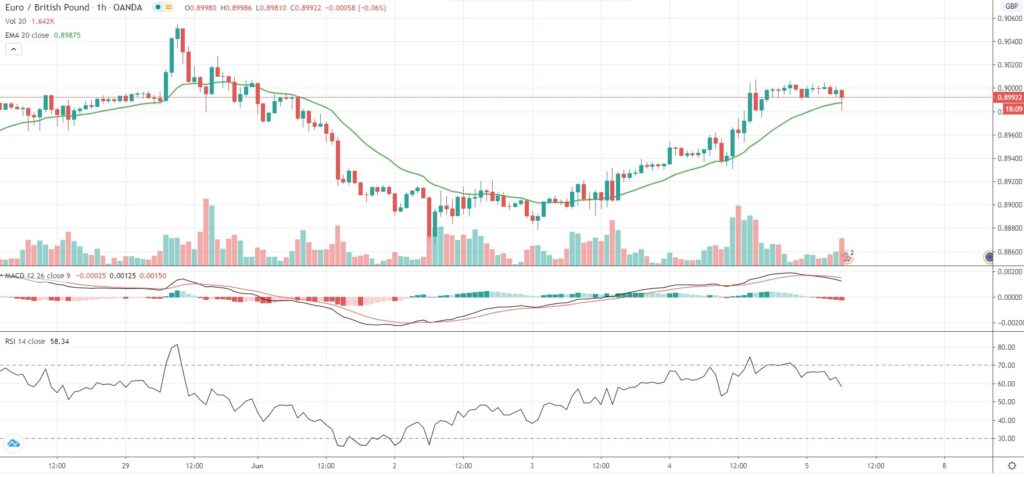EUR/GBP came off recent highs, while snapping a two-day streak of gains on Friday, after Germany’s Federal Statistical Office reported a much steeper drop in factory orders in April than anticipated.
New manufacturing orders shrank 25.8% in April, or at the sharpest monthly rate since the comparable series were initiated in January 1991, reflecting the severe impact caused by the coronavirus pandemic. Foreign orders plummeted 28.1%, while domestic orders were 22.3% lower compared to March. Analysts on average had expected a 19.7% slump in April.
The single currency received support, reaching 1-week highs against the Pound and 12-week highs against the US Dollar, after the European Central Bank on Thursday bolstered monetary stimulus to prop up pandemic-ravaged economies. The size of the bank’s Pandemic Emergency Purchase Program (PEPP) was expanded by EUR 600 billion to EUR 1.35 trillion, while the program is expected to run until at least June 2021. Market players had largely expected an increase in PEPP by EUR 500 billion.
“This highlights the ECB’s commitment to strengthening the recovery,” Jai Malhi, global market strategist at J.P. Morgan Asset Management, noted. “The euro zone may well emerge from the COVID-19 recession more quickly than the U.S. and UK.”
Policy makers also said that PEPP proceeds would be reinvested at least until the end of 2022.
At the same time, ECB’s Main Refinancing Operations Rate was left intact at a record low of 0%, while the Deposit Facility Rate was kept at a record low of -0.5%, in line with expectations.
As of 6:47 GMT on Friday EUR/GBP was edging down 0.10% to trade at 0.8990, after touching an intraday high of 0.9006 during early Asian session, or a level not far from Thursday’s one-week high.
In terms of macroeconomic calendar, a report by Halifax at 7:30 GMT today may show UK home values rose 2.8% year-on-year in May, according to market expectations, following a 2.7% increase in April.
“With market activity currently almost at a complete standstill, the limited number of transactions available means that calculating average house prices has inevitably become more challenging,” Russell Galley, Managing Director, Halifax, said. “It will not be until after lockdown restrictions are eased that we will get a sense of the new temporary normal conditions for the housing market,” Galley added.
At 8:00 GMT Istat is expected to report on Italian retail sales for April. In March, sales plummeted at a monthly rate of 20.5%, or the steepest since comparable series began in February 1996, due to the coronavirus pandemic. Non-food sales plunged 36.0% in March, while food sales registered zero growth.
Bond Yield Spread
The spread between 2-year UK and 2-year German bond yields, which reflects the flow of funds in a short term, equaled 61.7 basis points (0.617%) as of 6:15 GMT on Friday, down from 63.2 basis points on June 4th.
Daily Pivot Levels (traditional method of calculation)
Central Pivot – 0.8979
R1 – 0.9028
R2 – 0.9057
R3 – 0.9106
R4 – 0.9155
S1 – 0.8951
S2 – 0.8901
S3 – 0.8873
S4 – 0.8845






